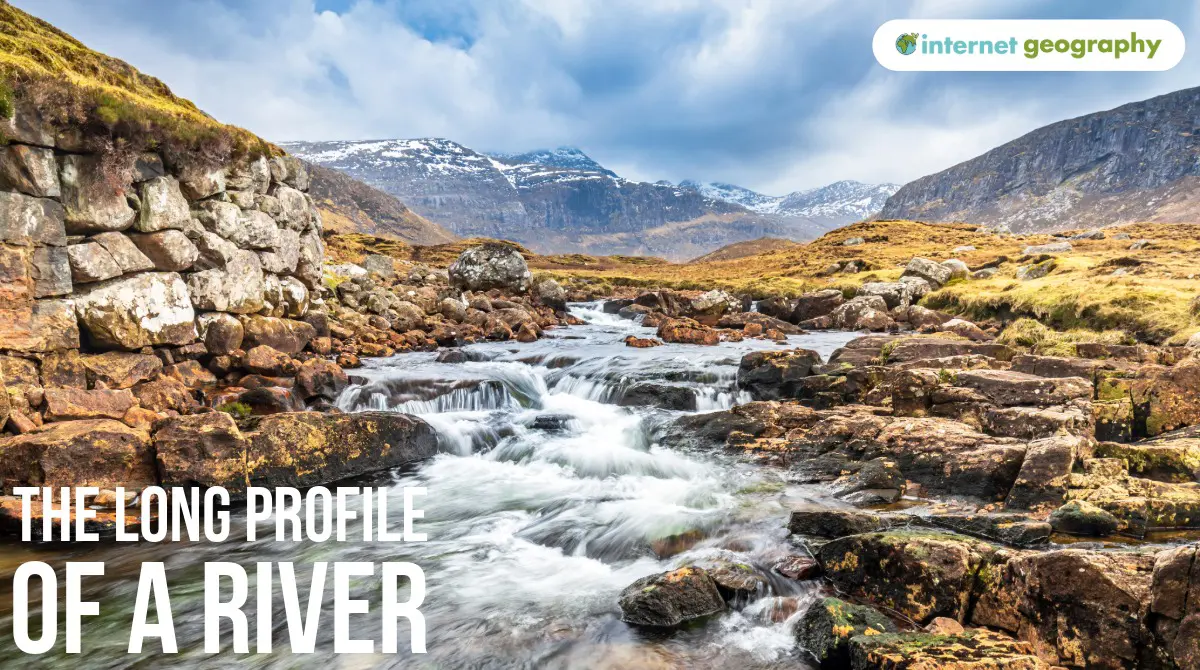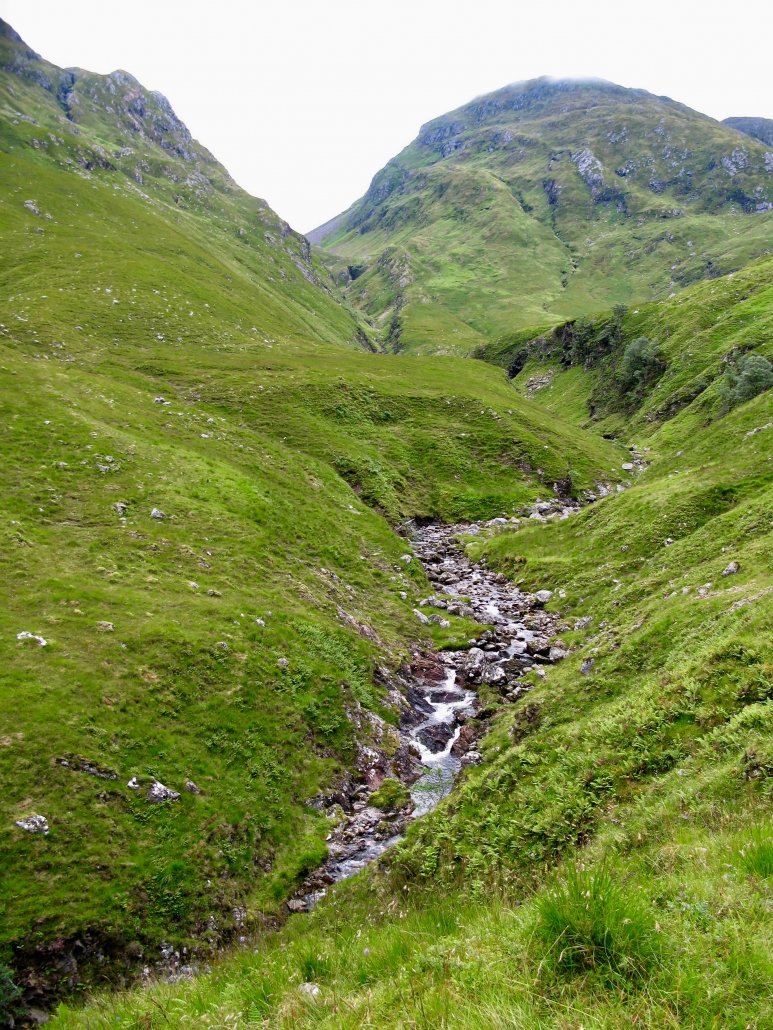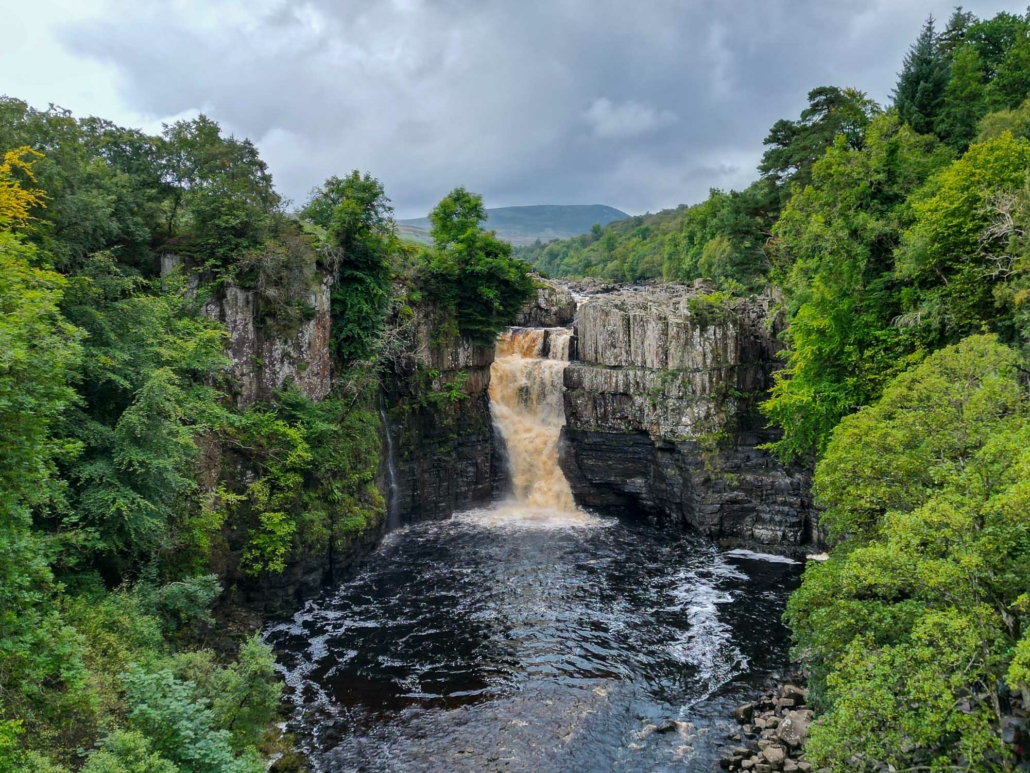Landforms of river erosion
Characteristics and formation of landforms resulting from erosion – interlocking spurs, waterfalls and gorges
Landforms of erosion develop where rivers actively wear away the landscape through vertical erosion. These features are most common in the upper course of a river, where the landscape is steep, the river flows swiftly, and most of its energy is directed downwards. The combination of steep gradients, narrow valleys, and vertical erosion produces distinctive landforms such as interlocking spurs, waterfalls, and gorges.
Interlocking Spurs
Interlocking spurs are ridges or ‘fingers’ of high land that project into a V-shaped valley. They form as small streams and rivers tumble down steep mountainsides and are forced to flow around areas of more resistant rock. Because the river has relatively low energy in its upper course, it cannot erode through these harder rocks. Instead, it follows the path of least resistance, winding around them. Vertical erosion dominates here, deepening the valley through hydraulic action and abrasion, but there is little lateral erosion, so the spurs remain prominent on either side of the valley.
Formation sequence:
- In the upper course, the river’s energy is mainly used for vertical erosion, cutting downwards into the valley floor by hydraulic action, where water forces air into cracks, and abrasion, where the load scrapes against the bed.
- The valley sides are weathered by physical weathering, such as freeze–thaw, which breaks up exposed rock. Material moves downslope due to gravity and mass movement, helping to shape steep valley sides.
- When the river meets areas of more resistant rock, it cannot easily erode through them, so it flows around these obstacles.
- Over time, this creates a series of protruding ridges of higher land (spurs) that alternate from each side of the valley and appear to interlock as the river flows between them.
- The result is a V-shaped valley with interlocking spurs, a classic landform of the upper course.
Waterfalls
A waterfall is a steep drop in the river’s course, usually where a band of hard rock overlies softer rock. They are common in the upper course of rivers, where vertical erosion is strongest.
Formation sequence:
- The river flows over alternating layers of hard and soft rock. The softer rock is eroded more quickly by hydraulic action, which forces air and water into cracks, and by abrasion, where sediment grinds against the rock.
- As the softer rock wears away faster, a step forms in the riverbed, and water begins to fall over it.
- The falling water gains energy, increasing hydraulic action at the base of the fall. This erosion forms a plunge pool, which is deepened by swirling, turbulent water and rock fragments.
- The soft rock beneath the hard layer continues to erode, creating an unsupported overhang of hard rock.
- Over time, the overhang collapses under its own weight. The collapsed material is broken up by attrition and used by the river to erode the plunge pool further through abrasion.
- This process repeats: the waterfall retreats upstream, forming a steep-sided gorge as it moves.
Gorge
A gorge is a narrow, steep-sided valley formed by the upstream retreat of a waterfall through continuous erosion and collapse.
Formation sequence:
- As the waterfall retreats, the river continues to erode the rock at its base through hydraulic action and abrasion.
- Repeated collapse of the overhanging hard rock adds debris to the plunge pool, where it is broken down further by attrition.
- Each collapse causes the waterfall to move further upstream, leaving behind a deep, narrow gorge with steep sides and a turbulent, fast-flowing river at the bottom.
- Over time, the gorge lengthens as the waterfall continues to retreat, marking the river’s former positions.
Summary
Flashcards
Coming soon
Quiz
Coming soon






